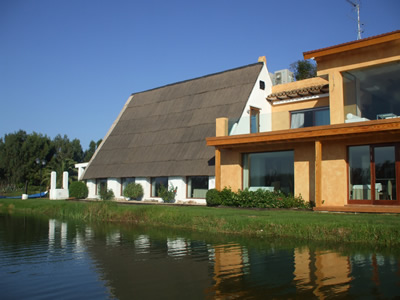WIRELESS ANALYTICS 2024 - The First International Conference on Wireless and Telecommunications
November 17, 2024 - November 21, 2024
WIRELESS ANALYTICS 2024
Onsite and Online Options: In order to accommodate various situations, we are offering the option for either physical presence or virtual participation (pdf slides or pre-recorded videos).
ISSN:
ISBN: 978-1-68558-218-0
WIRELESS ANALYTICS 2024 is colocated with the following events as part of TechWorld 2024 Congress:
WIRELESS ANALYTICS 2024 Steering Committee
|
 |
Kshirasagar Naik
University of Waterloo
Canada
|
|
 |
Ioakeim K. Samaras
Intracom Telecom
Software Development Center, Thessaloniki
Greece
|
WIRELESS ANALYTICS 2024 conference tracks:
PHY, MAC, MIMO and cross-layering fundamentals
Modulation, coding, equalization, and synchronization
Interference modeling, cancellation, and alignment
Signal processing for wireless communications
Cross-layer MAC design
Wireless MAC protocols for 5G/6G
Software defined radio, RFID MAC
QoS support and energy efficient MAC
MAC protocol for energy harvesting wireless networks
PHY strategies for low-rate, sporadic and asynchronous communications
Channel modeling
Cognitive radio, smart spectrum sensing and dynamic spectrum access
Cross-layer optimization in cognitive networks
Content caching and storage in wireless networks
MIMO, massive MIMO and cloud-RAN
Cooperative, device-to-device and multi-hop communication
PHY layer design for cellular, wireless LAN, ad hoc and sensor networks
Energy efficient and energy harvesting PHY layer design
Joint information and energy transmission
PHY layer security and privacy, ultra-wideband, mmWave and sub-THz communication
MAC protocol for energy harvesting wireless, cellular/small cell networks and cloud-RAN
MAC protocols for nano networks and mmWave networks
mmWave protocols design and adoption
Cross-layer design for massive MIMO and multiuser MIMO networks
Energy Power Transfer and Signal Processing
Energy harvesting and sustainable future powering
Economic benefits from wireless power transfer
Wireless powering of ultra-low-power-devices
Low-power wireless technologies for IoT (6LoWPAN, ZigBee, LoRa)
Near-field (inductive, resonant) power transfer
Power management and power electronics
Coils, resonators, ferrites, modeling, simulation, and design
Static and dynamic wireless charging
Directional and omni-directional wireless power transfer
Antenna systems, propagation, and RF design
Multiple antenna systems and cooperative communications
Energy allocation, energy efficiency and adaptive power
Smart Grid and powering of electric vehicles
Drones wireless powering
Energy topologies in smart cities
Energy-cooperative networks
Wireless and Telecommunications Networks
Wireless routing and discovery
Radio access technology and heterogeneous networks
Software-defined mobile/wireless networks
Wireless Network Functions Virtualization
Virtual network management and orchestration
Cooperative wireless networks
Vehicular communication networks
Mesh, relay, sensors, and ad hoc networks
Optical, overlay, and peer-to-peer networks
Wireless sensor networks
Mobile cloud, fog computing, mobile edge computing and networking
Neutral host architectures and disaggregation (ORAN and vRAN)
mmWave, THz, VLC networking
Multi-band wireless
IoT, M2M, Sensor networks, and ad hoc networking
IoT ultra-dense networks
Multi-tenant 5G networks
Cognitive radio and networking
Mobile backhaul networks
Big Data enabled Self-Organized Networking
Mobile big data and network data analytics
Integrated Wireless/Optical networks
Mobility, location, and handoff management
Multimedia QoS and traffic management
Wireless broadcast, multicast, and streaming
Congestion and admission control
User-centric and wireless body area networks
Mobile social networks
Wireless network measurements and characterization
Satellite-based mobile access and backhaul
Hybrid satellite-terrestrial networks
Wireless Applications and Services
Home/industrial wireless applications industries
Mobile/wireless network support for vertical hnadoffs
Wireless sensing, remote sensing, and satellite-terrestrial communications
High-sped transportation and 5G
5G and satellite integration (towards 6G)
Wireless for UAV
Software defined Networks (SND), NFV (network Function Virtualization)
Slicing. Service Function Chaining (SFC)
Transportation and vehicular wireless communications
Wireless-based services (healthcare, news, national alarms, special-needs transportation)
Drone communication, monitoring, and control
Artificial Intelligence (AI) with Machine Learning (ML) in wireless applications
Mobile, wearable, and implantable personal devices
Dynamic sensor networks for urban applications
Wireless localization services (e.g., wireless powering on roadways, emergency, etc.)
Cooperative localization
High altitude platforms and satellites
Emergency wireless communications
Wireless real-time communications
Biomedical implants and medical devices
Adaptive content distribution in on-demand services
Context and location-aware wireless services and applications
User-centric networks and adaptive services
Wireless body area networks and e-health services
Smart and adaptive transportation systems
Challenges, Optimizations and Validations
Hybrid licensed/unlicensed spectrum access schemes
Technologies, architectures, and enabling business models for rural communications
Wireless emergency and security systems
Large-scale wireless communications
Ultra-reliable communications
Wireless network security and privacy
High performance communication and reliability in wireless networks
Ultra-reliability and low-latency wireless networks
Handover optimization and mobility management
Self-tuning handover mobile networks with dense small cells
Handling partial connections
C-band 5G Growth, 5G-NR dedicated networks
5G mmWave for V2I and V2V
5G ultra-reliable low-latency communications
Managing 5G slice-based environments
Near-Space communications
Efficient resource management and optimization
Cross-layer optimization under reliability and energy constraints
Provisioning V2X services
Regulations, Control, and Tools
Space regulations
Automated frequency coordination
Green wireless communications
Fairness in Wi-Fi and LTE-U coexistence
Coexistence in unlicensed mmWave bands
Modeling and monitoring time-limited capacity wireless channels
Automatic orchestration of the 5G deployments
Control of discontinuous transmission
Enabling regulations, standards, and spectrum management
Testbed and prototype implementation of wireless services
Conversational AI in Telecom Industry
Wireless Networks Datasets
Graph Representation Learning for Networks
Deadlines:
Submission | Sep 16, 2024 |
Notification | Oct 10, 2024 |
Registration | Oct 20, 2024 |
Camera ready | Oct 25, 2024 |
Deadlines differ for special tracks. Please consult the conference home page for special tracks Call for Papers (if any).
































